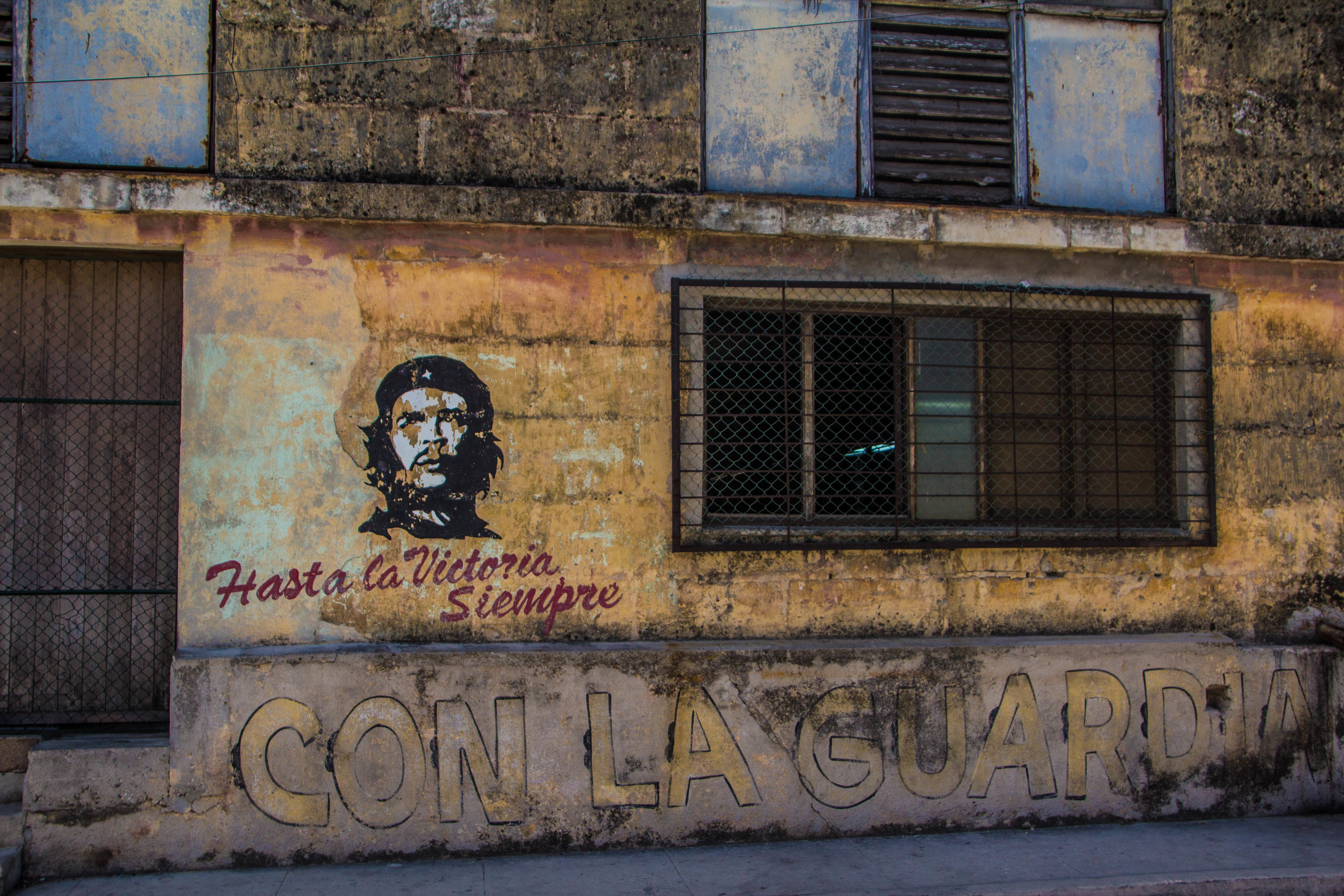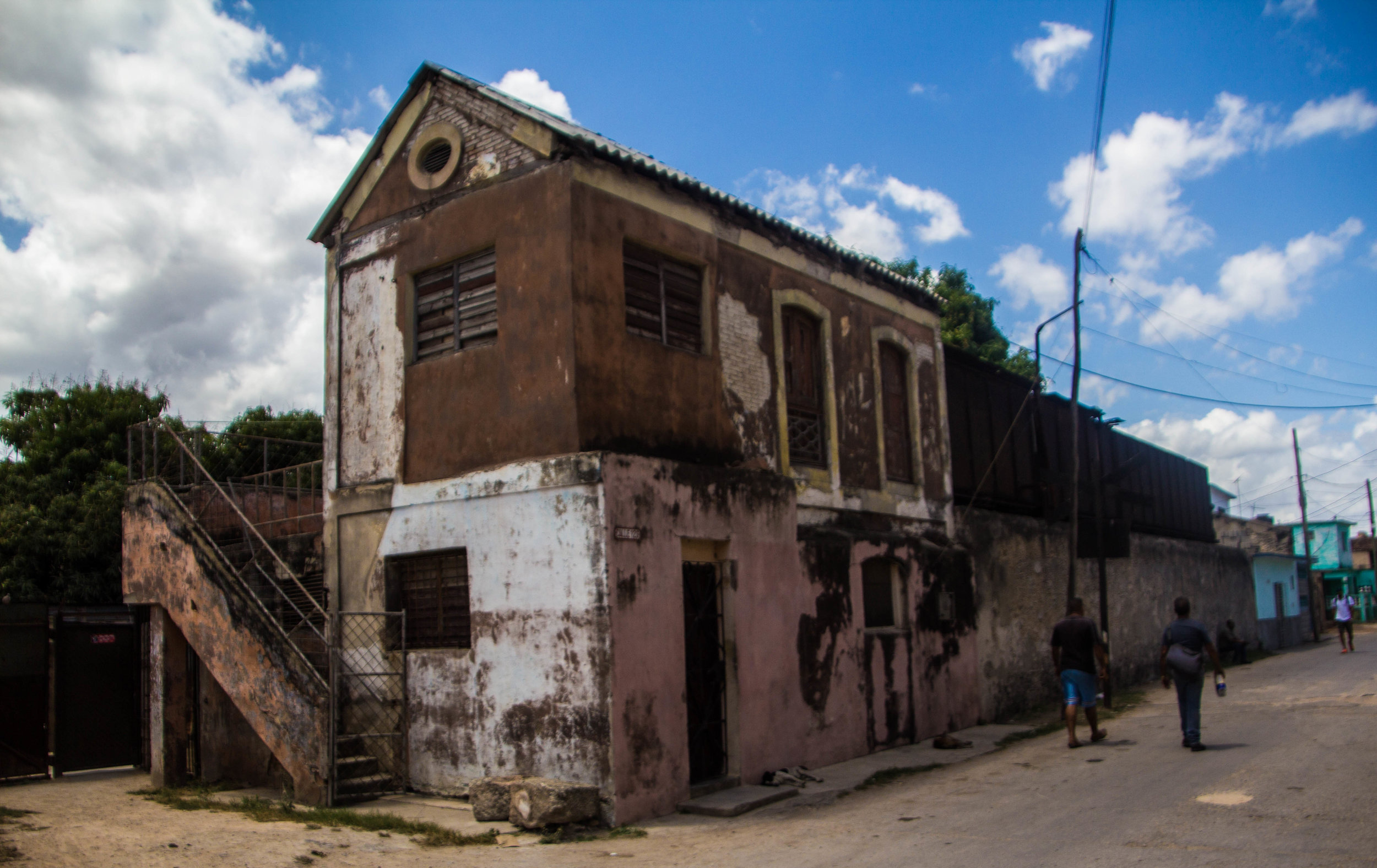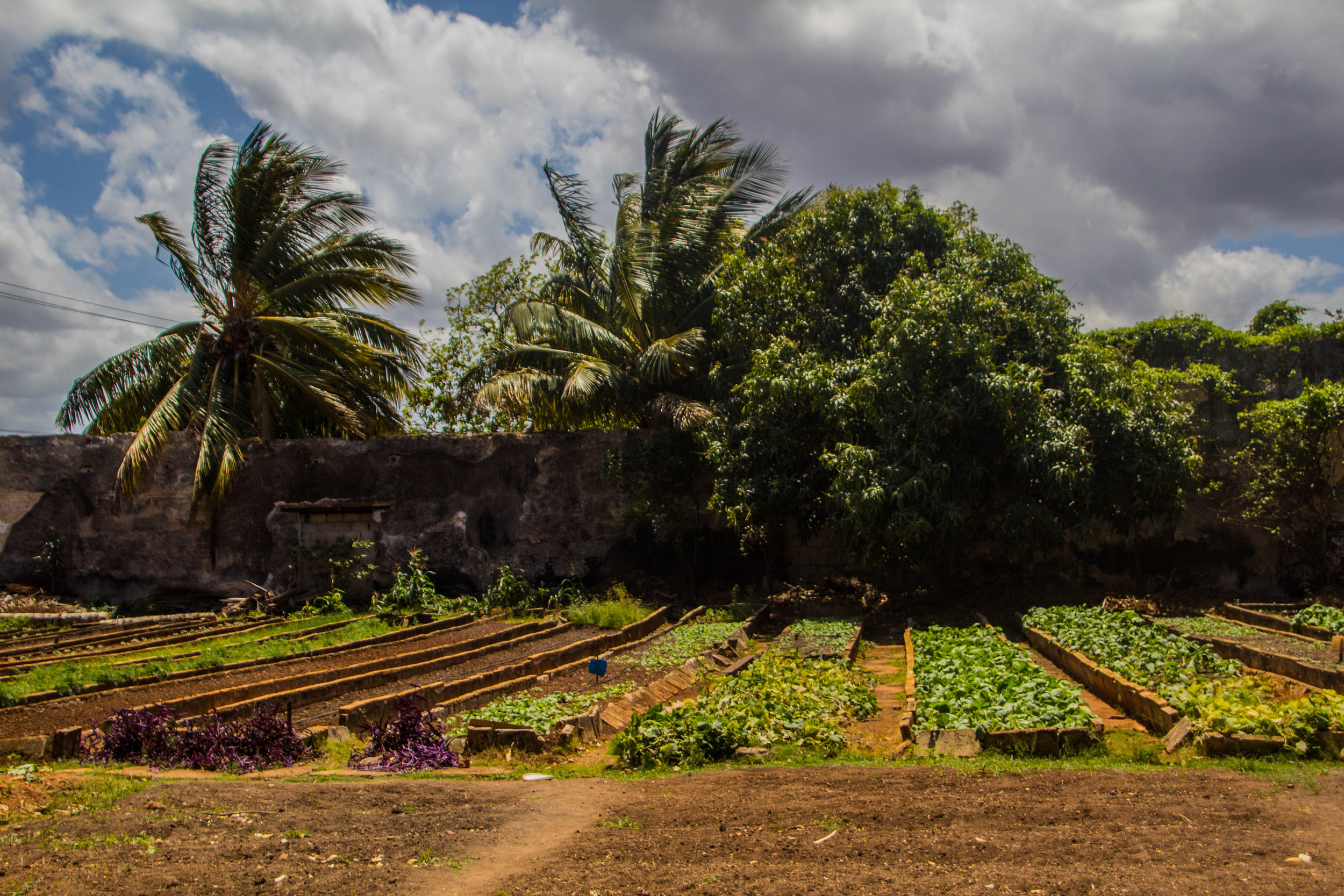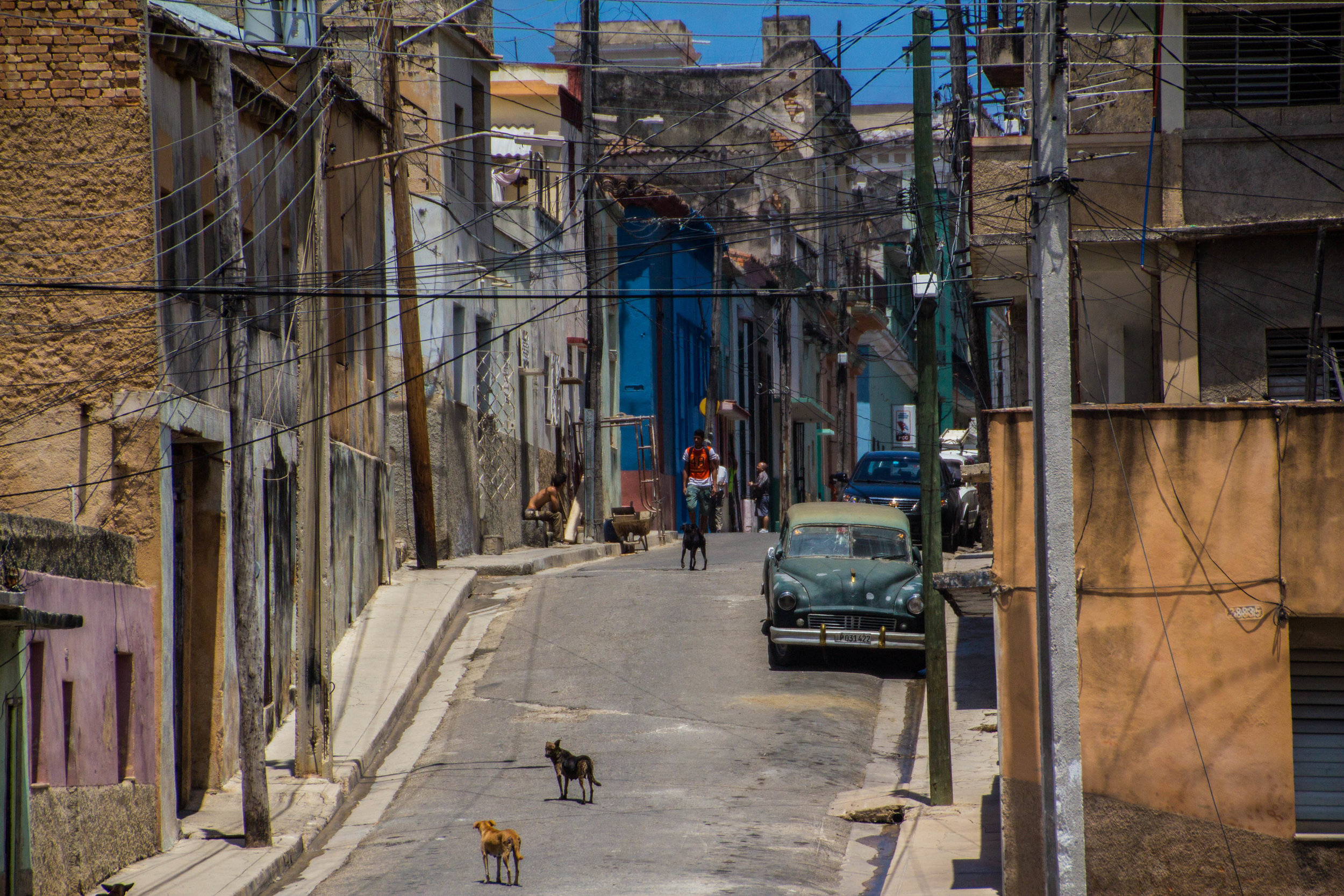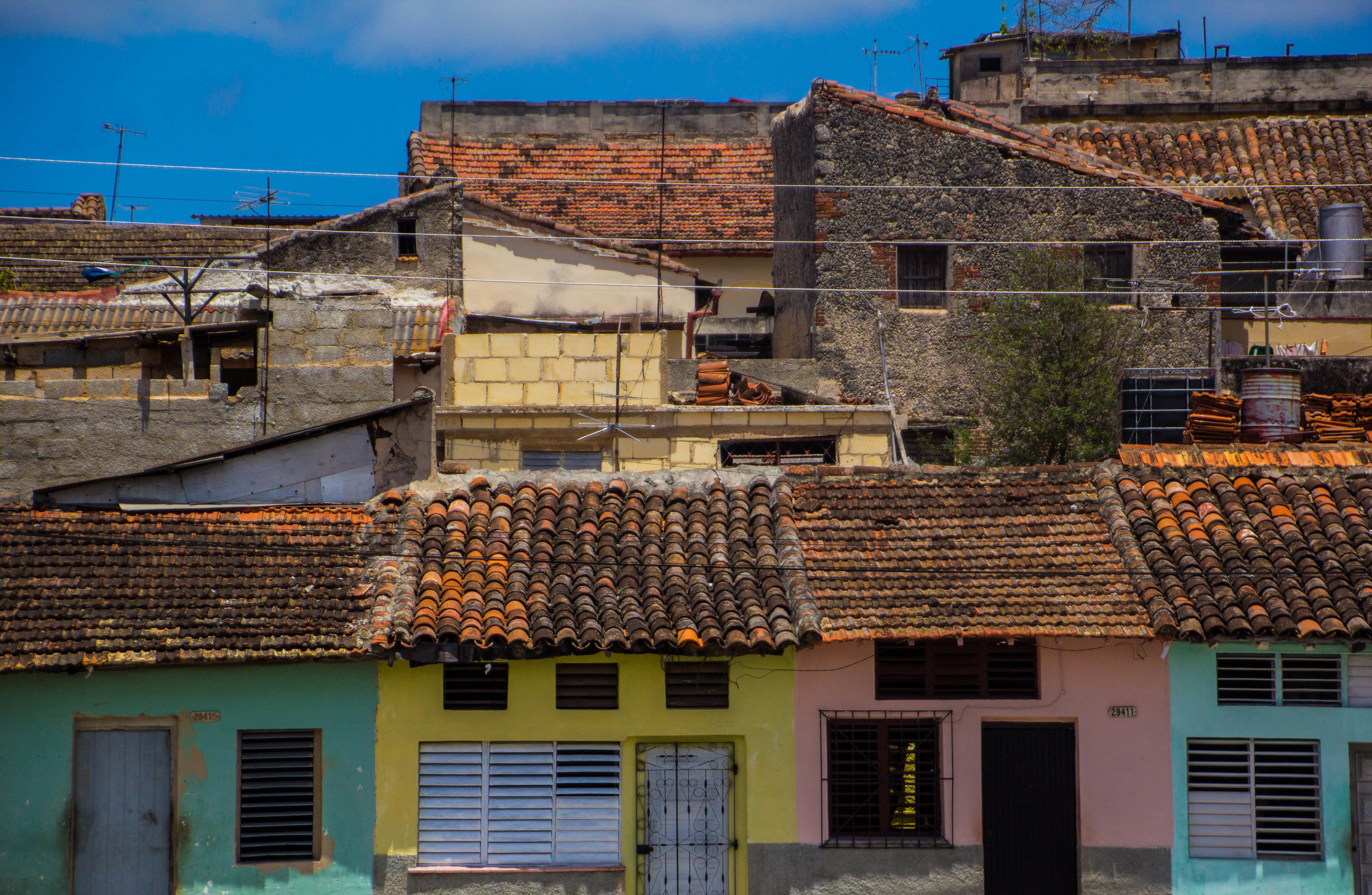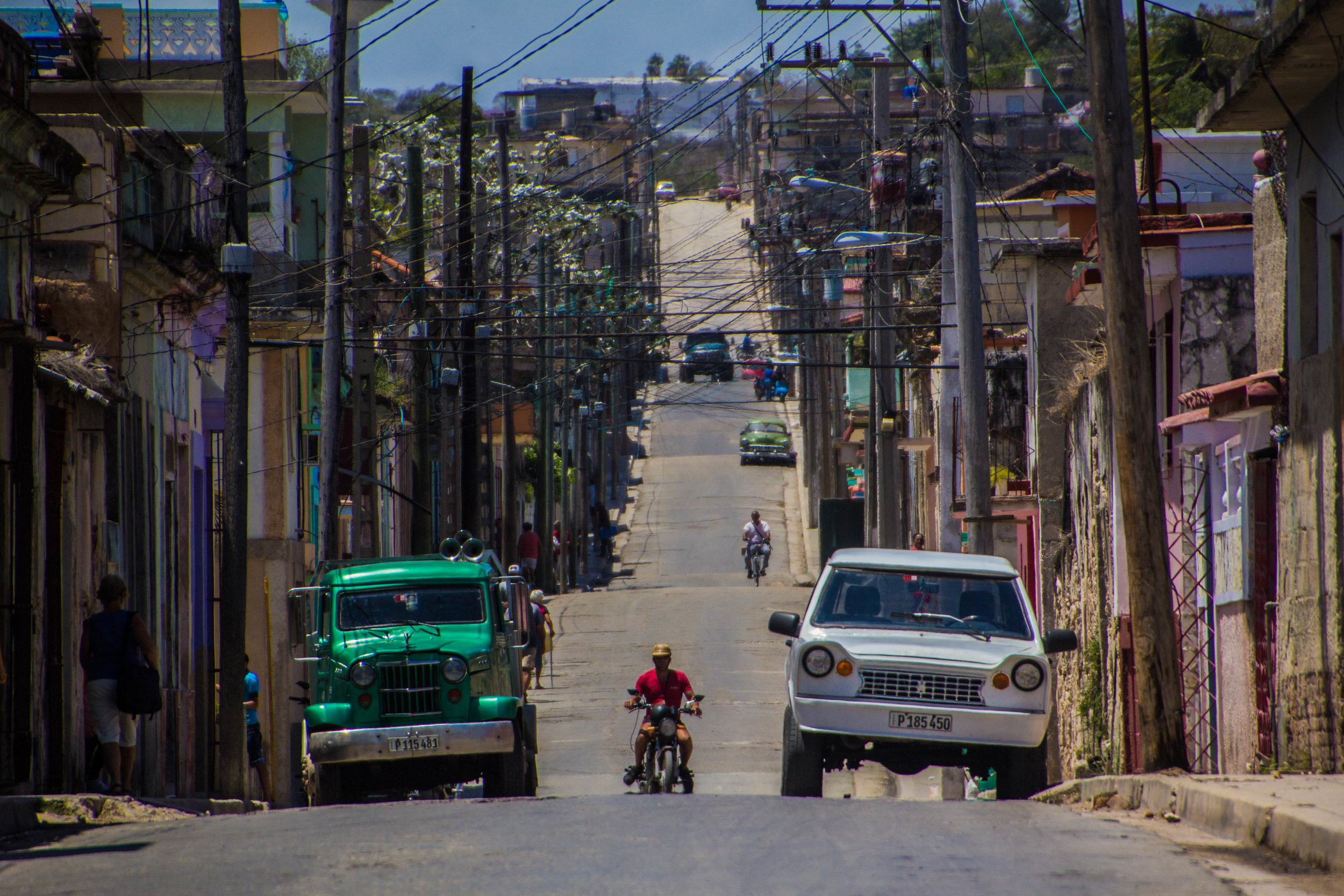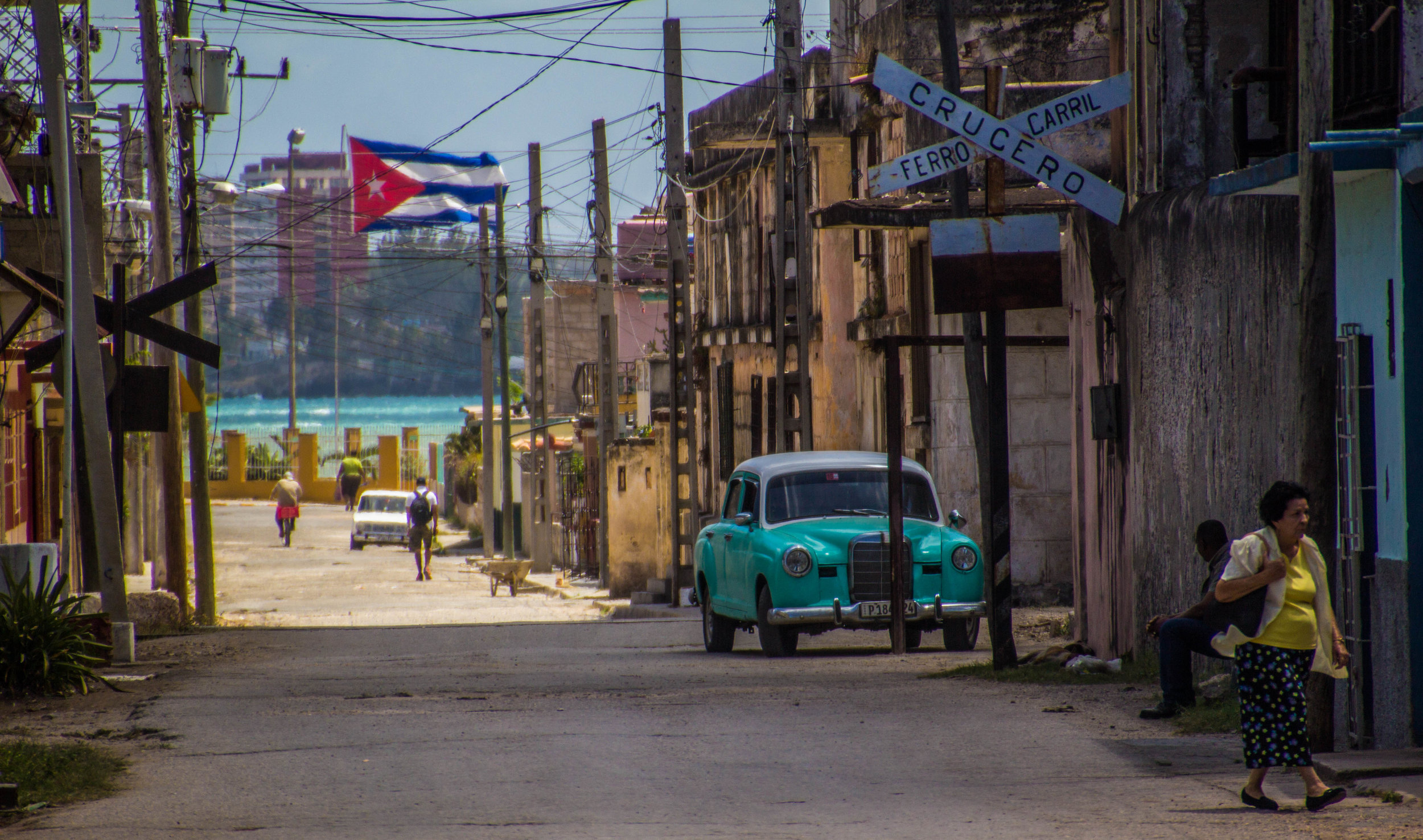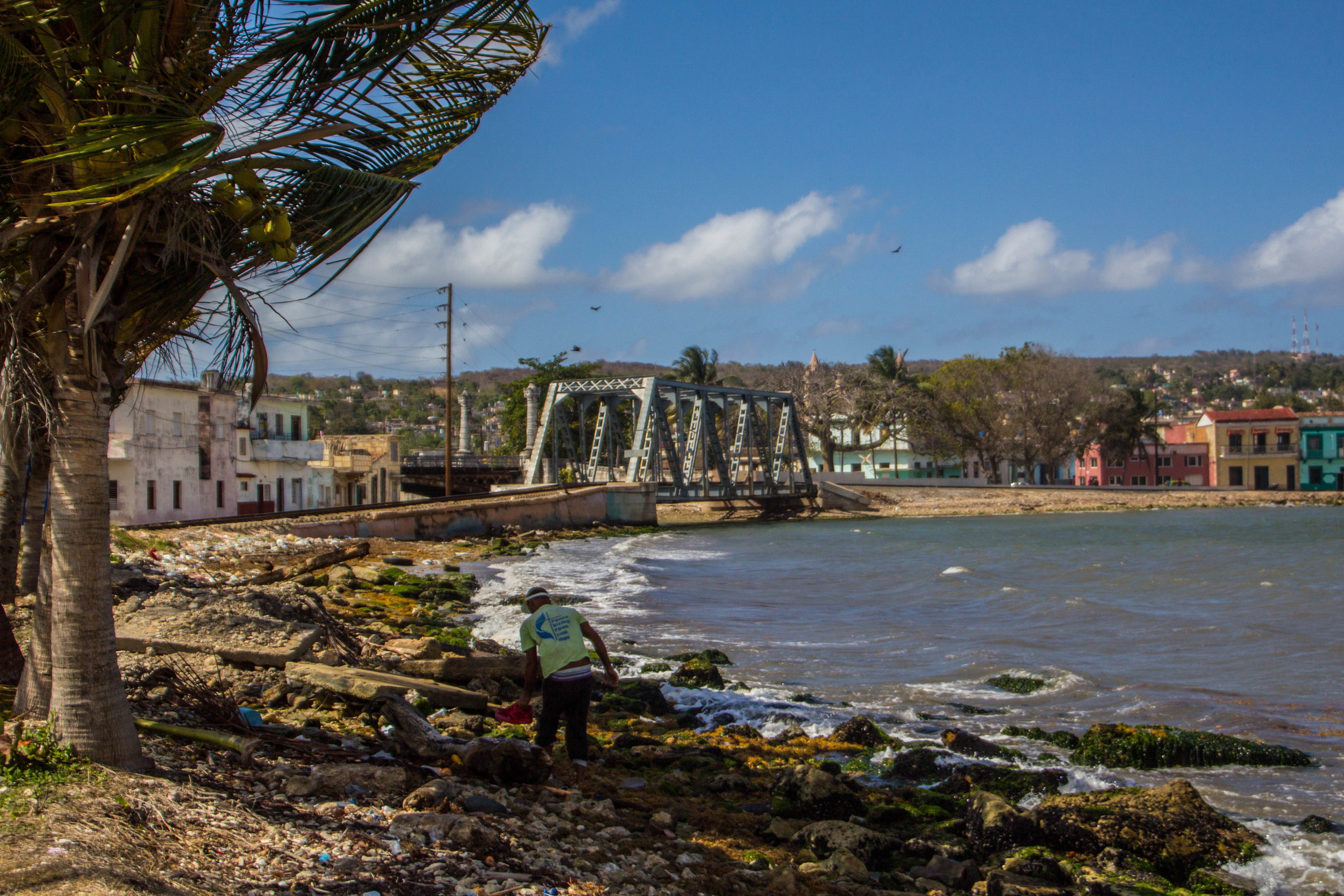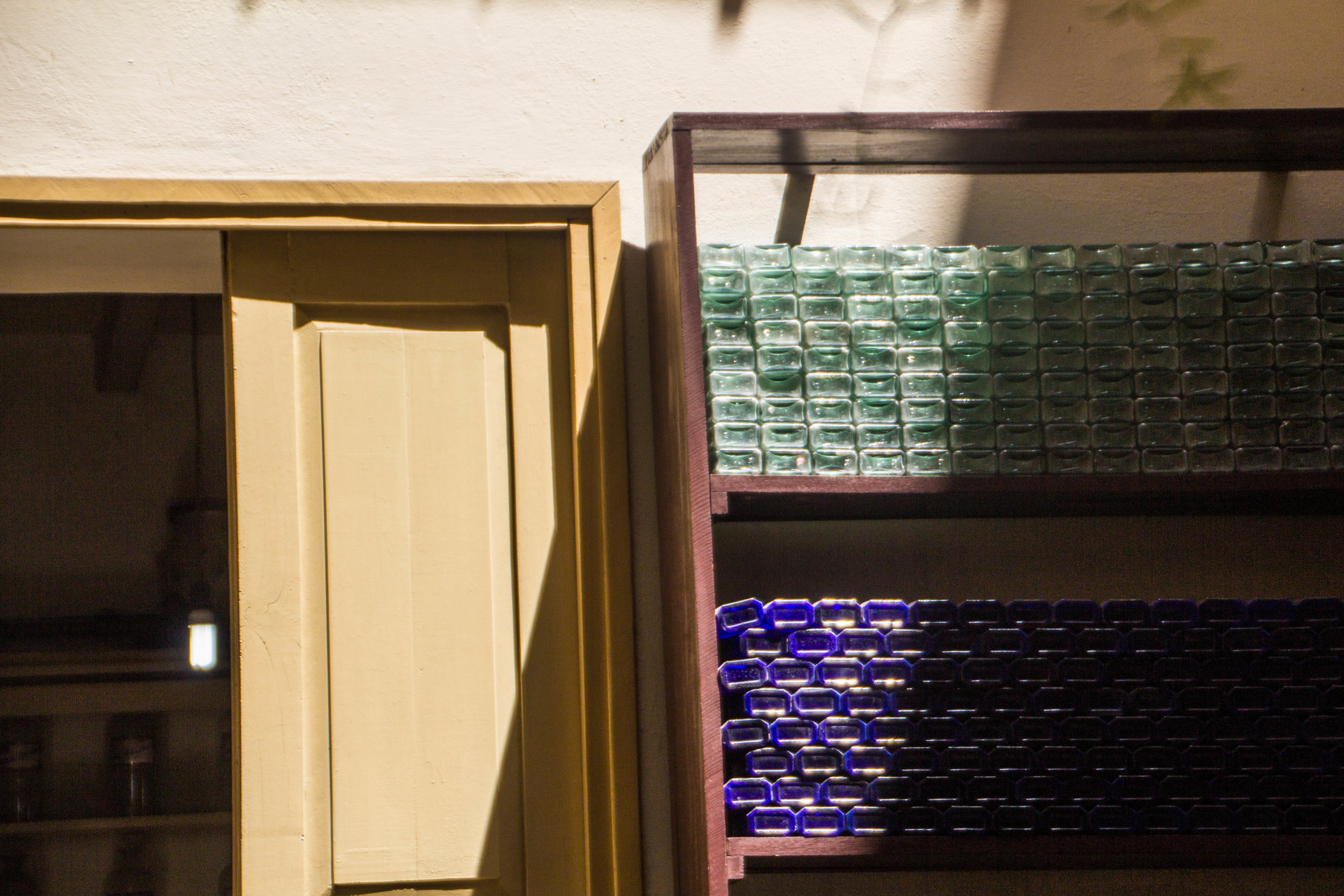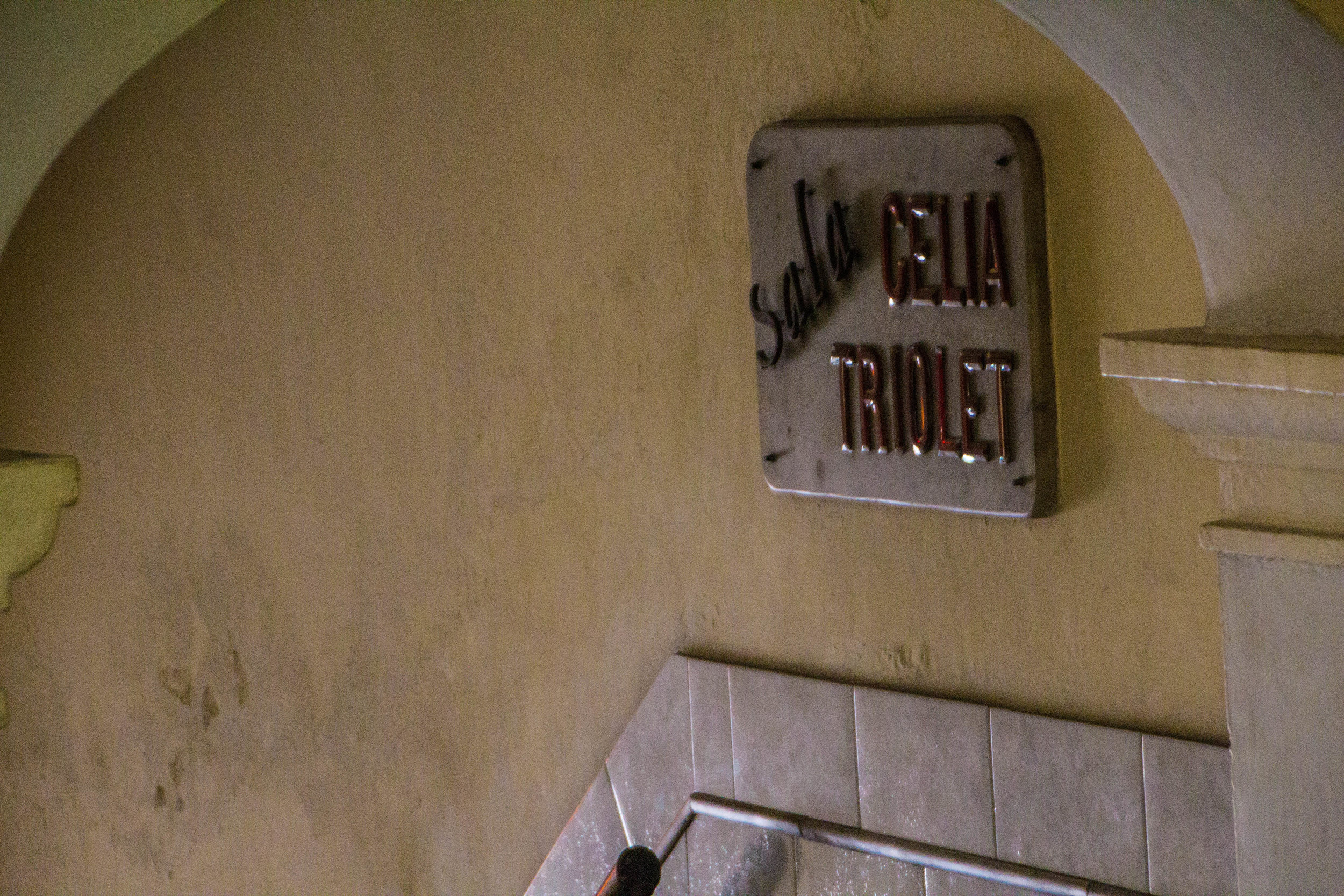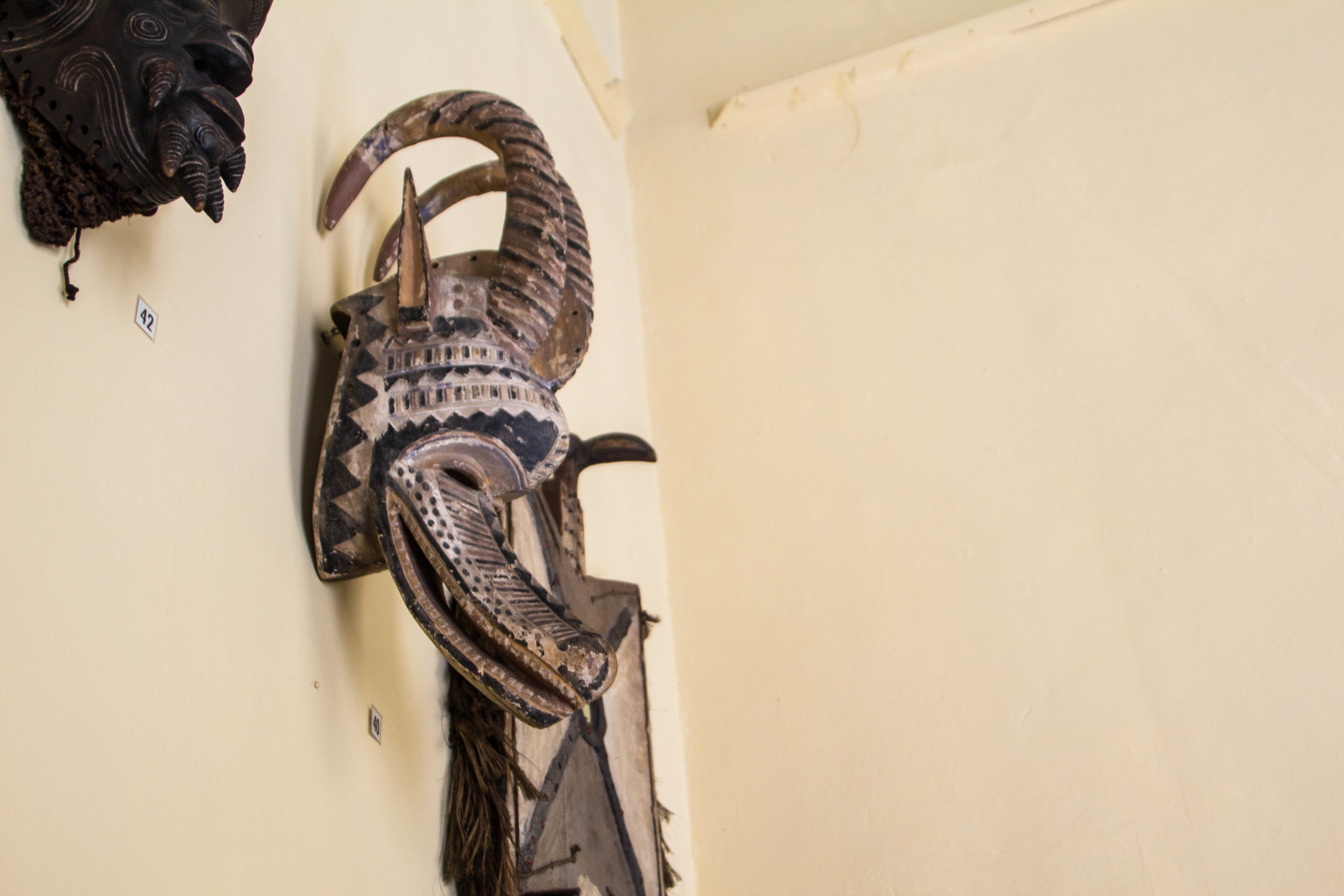An Introduction To Matanzas
Matanzas is a small sea-side city that sits 56 miles (or 90 kilometers) east of Havana, on Cuba's northern coast. It's located in the Bay of Matanzas and is the capital of a province that is also called Matanzas. That's a lot of Matanzases! The name means "massacre," and comes from an old story of 30 Spanish conquistadors who were killed here. The story goes that they were trying to cross a river to attack an encampment of Cuban aboriginals. They didn't have any boats to cross with, so they asked the local fishermen for help. These fishermen took them to the middle of the river, and then flipped the boats. The Spaniards were wearing metal suits of armor, which were very heavy and difficult to take off, so they all drowned. MATANZAS!
Matanzas was first settled in 1572, but was not officially founded until 1693. It's founding families came from the Canary Islands, but as the sugarcane industry began to take off, they were quickly joined by large numbers of African slaves. In fact, the 1841 census revealed that 62.7% of the population during that time was made up of slaves. This is well past what would be considered "critical mass" for enslaved peoples in a population, which is why Matanzas was the site of numerous plotted and attempted slave rebellions. The most famous of these incidents was the controversial Escalera conspiracy, which was discovered by the Spanish in 1843 and used to justify a major (and bloody) crack-down on slaves, abolitionists, and Afro-Cubans in general. When slavery was finally abolished, Matanzas was... an interesting place.
Matanzas is an important landmark in Cuba's cultural topography because it has, historically, been a center of the arts. In the past, it was known as a city of poets and musicians, earning it the nickname "The Athens of Cuba." I haven't been able to unearth much about these supposed poets, but I can tell you that this city was the birthplace of danzón, as well as rumba. These, if you don't know, are genres of music. This might be the first you're hearing of danzón (it was for me as well), but you should be familiar with rumba. Rumba started right here in Matanzas with the colonial blending of Spanish and African cultures.
Today Matanzas sits quietly on the coast of Cuba, in relative anonymity. It seems its hey-day has passed, but it's still an beautiful little city filled with interesting history. ...Although, a decided low-point in that history is the fact that Ted Cruz's dad was from here. So, aside from that, hundreds of years of horrible slavery, and a mass murder that became Matanzas's namesake, great history!
YUP! Seriously though, this was one of my favorite places in Cuba. Here's Matanzas on the map to give you some context for where we are in this article. We made the trip here from Varadero and would eventually head back west to Havana. So let's get started!
A Walk Through The East Side Of Matanzas
We arrived in Matanzas via camione, which is Cuba's version of long-distance public transportation. These broken-down, bare-bones buses and trucks will stop periodically at various points on the side of the highway so that Cubans can get on and off. It only costs 0.25 to 0.50 CUC (0.25 to 0.50 USD) to ride, so if you're up for an adventure and you know a little bit of Spanish, they're awesome!
We came to Matanzas by way of Boca de Camarioca, which is a tiny seaside town near Varadero, to the east. We had little knowledge of what Matanzas had in store for us, so for lack of any better ideas, we hopped off our camione on the eastern side of the city. It would be a long walk west into the center of the city from here.
The harsh Cuban sun beat down on us as we began our exploration, but Matanzas wasn't entirely new. We had seen this city once before from a back of a taxi. Curious, I had asked our driver how big Matanzas was. He scoffed, telling us that it was a tiny city, and he was right. The population of this city is less than 150,000, so I wasn't expecting much. However, Matanazas was already beginning to feel much more substantial than I had anticipated. Wandering through the quiet neighborhood streets of eastern Matanzas, the city unceremoniously unfolded before me, and the further I walked, the more I became aware of how much further I had ahead of me.
Matanzas is reputed as being a fairly impoverished and particularly run-down part of Cuba, so I wasn't sure what to expect. On these eastern outskirts, this reputation certainly proved itself to be valid. Some streets felt well-kept and residential, with families and students coming and going from houses and schools, but the more industrial streets were another story. These streets were ruinous. There were windows with broken glass, walls with peeling paint, doors that looked like they had been padlocked for 20 years, and pairs of dirty, down-on-their-luck Cuban men sitting in shady areas looking despondent.
Here and there, we would see Oldsmobile cars parked, but in general, traffic was notably absent on this side of the city. There wasn't much going on. Here are a few pictures from our walks through eastern Matanzas...
The only landmark that we could find on our map on this eastern side of the city was "Mural del Che," which obviously is in remembrance of the fabled Che Guavara. Cuba is absolutely plastered with his likeness, more so even than Fidel Castro.
For lack of anything else to do, we headed towards this landmark. We knew that this alleged mural was also part of a garden, so it felt like a safe bet that this would be a pleasant spot to stop for a rest.
Our quest to find this mural brought us right up to the river front. Tucked off to one side of Matanzas's biggest bridge, we saw the mural. It was surrounded by a sad, poorly maintained garden of shrubs. There was nobody there to look at it except for us; there wasn't even anybody else within viewing distance, which surprised me. We were in a crowded urban area at this point, but this solitary mural felt like it was in a ghost town. We took a moment to look at this weathered likeness of Che, and then moved on.
Mural de Che is all but right on banks of Rio San Juan. Central Matanzas was just on the other side of this river, but instead of taking the large bridge that was, at this point, right next to us, we decided to take the scenic route. There was an ominous-looking limbo area between us and the next bridge inland where paved roads ended, giving way to dirt, so we walked in that direction.
When people told me that Matanzas was poor, this must have been what they were talking about. The pavement quickly ended as we walked south along Rio San Juan. At a glance, this area seemed uninhabited. Some of the buildings (or, rather, shells of buildings) looked like a war had just ended. We walked slowly, taking it all in. Some of the land had been repurposed for agricultural uses. Here and there we would see men with horses standing in green space, and I assumed there was a stable nearby. But then, we walked by a particularly decrepit building that looked as if it might collapse at any moment, and 2 women walked out with baskets full of clothes. I've seen some shit in my day, but for some reason, the poverty here sort of blew my hair back. One of them turned and saw us, and without missing a beat, put on a big smile and waved to me. I waved back.
Across Rio San Juan, we saw central Matanzas on the opposite bank. It wasn't exactly a shining city on a hill, but it was a whole lot better than this! There was infrastructure. There were people walking. There were cars driving. There were buildings that were (mostly) not falling apart. It actually looked like there was a beautiful and interesting city waiting for us over there, and I was excited to see it. Here are a few pictures I snapped of Central Matanzas from the east side of the river....
Emerging at the other end of this poverty-intense section of the city, we saw the 2nd bridge we had been walking towards. Matanzas is known as "The City of Bridges," due to the many bridges that cross over its 3 rivers. Crossing this bridge would land us in central Matanzas, with the hustle and bustle. Here's a shot I took from that bridge looking back down the river, towards the Caribbean.
Central Matanzas
Crossing the bridge felt like entering an entirely different world. The eastern portion of the city had been quiet and run-down, but this was absolutely bustling! It was hard to even cross the street without getting hit by a car or a public bus. The photos below don't quite do this justice because it was pretty impossible to take pictures during periods of intense traffic. The streets were narrow and sidewalks weren't much better—only a couple feet wide. There were so many people walking on these tiny sidewalks that stopping to take pictures would have been like clogging and extremely narrow artery. This made photography challenging, but I did my best.
The hot Cuban sun had not cooled a single degree in our walk, and here in the narrow streets of urban Matanzas, it felt like a pressure cooker. The fumes put out by the many Oldsmobiles that had clearly been driving for longer than I have been alive filled the streets with the smell of exhaust. It was an exciting place to walk, but a less than stellar place to be breathing.
It didn't take long for us to seek respite from the unrelenting heat and exhaust. The building-fronts in Matanzas had the quality of being almost completely opaque, making them feel more like walls than entrances to the indoor world. However, we eventually came across a small open-front Italian restaurant and ducked in for some lunch. One would assume that eating foreign food in a city like Matanzas would be a luxury, but I paid a total of 2.25 CUC (2.25 USD) for a full meal. This is beyond cheap, which came as a pleasant surprised because the cost of eating out in Cuba had, so far, been pretty much on-par with the western world. Matanzas, however, was the first non-tourist destination that we had visited, so these were actual Cuban prices.
As we were leaving, an especially run down car smoked, groaned, and creaked its way to a stop right next to this restaurant. Men outside the door were yelling to one another in Spanish, and just then, there came a loud bang, as if something had just gone horribly wrong with their engine. Whatever had happened, it released a thick, black cloud of smoke into the air which promptly floated through the doors of our restaurant, filling the space completely. Everybody began to cough. As smoke continued to billow through the door, our flustered waitress ran back into the kitchen and came back out with a young man who ran out the door to tell these men to move their dumpster-fire-of-a-car further down the street. We chuckled as we paid our check and left, our heads ducked below the smoke.
Here are a few of the better photos I managed to snap from this area...
A few more minutes walking northwest from this point brought us further into the center of Matanzas, where we eventually arrived at a plaza known as Parque de la Libertad. If Matanzas has any "attractions," this would be where they begin. The buildings here began to take on a much more European feel, and the streets became much cleaner. Clearly we were entering into the nicer part of town. Still, Matanzas's identity was unmistakable, even here.
From here, Matanzas became a series of museums and historical sites. We saw quite a bit during our time here, and the following series were our favorites: Hotel Velasco, Catedral de Matanzas, Museo Farmacéutico, and Museo de Arte. But before we get to all that, here are a few photos from the Parque de la Libertad area, as well as one from the bay-front. I especially love that retro "Biblioteca" (Library) sign. Cuba is a time capsule.
Hotel Velasco
The first thing that we have to get out of the way is Hotel Velasco. Hotel Velasco was a gorgeous building looking out on Parque de la Libertad that we sort of stumbled into. To be clear, this is not an attraction, rather, it's a functioning hotel! You can make a reservation and stay here if you want to come to Matanzas, and I would encourage you to do so. I know there must be some fascinating history behind this place, but so far all I have been able to track down is that this hotel was restored and re-opened in 2011. When was the original opening? Let me know if you can figure it out!
The hotel itself was an extravagant relic. A marble staircase wound upwards around a single thick pillar (also made of marble) to the 2nd level of the building. From the tables of Hotel Velasco's luxury restaurant, which filled the ground level of their miniature atrium, this 2nd floor was clearly visible. The sky-light overhead cast natural light on the many palm and fern leaves that filled in the corners of the lobby and restaurant areas. The was a bar in this lobby as well, making it a good place to sit down and watch life in Matanzas happen through the window.
Catedral de Matanzas
Catedral de Matanzas, also known as St. Charles Borromeo Cathedral is one of the oldest and most culturally significant sites in all of Matanzas. The first brick in building this massive church was laid in 1693, the same year at the official founding of the city. It was built to replace an even older church that was destroyed in a storm. Apparently this church was made entirely of palm leaves... which is the most unbelievable and unexplained fact that I learned in all of Cuba. It's no wonder it was destroyed in a storm! At any rate, it was officially finished in 1735, and has been in near-constant use since then.
Coming into this church from the bustling streets of Matanzas brought with it a suffocating silence. You could here a pin drop in here. I took my camera and discretely began taking pictures. The sound of my shutter opening and closing caught the attention of an older Cuban woman who began walking towards me. She told me (in Spanish) that there was a movie screening happening in the back room, gesturing for me to follow her. In the back room an old 1990s TV set was hooked up to a DVD player and a small congregation of locals sat waiting while a clergy member struggled to make this out-dated technology work. I waited for a few minutes, but things didn't look good for the screening of this movie, so I left. Oh well.
Museo Farmacéutico
El Museo Farmacéutico, or the Pharmaceutical Museum, is an antique pharmacy sitting in the heart of Matanzas just off of Parque de la Libertad. In its original form, this place was one of the premier pharmaceutical institutions of Latin America, but it has since been turned into a museum of what was. This institution was first founded in 1882 by the Triolett family, and it still looks much the same as it did in the late 1800s. It's extremely well preserved, and surprisingly interesting. I wasn't exactly thrilled at the idea of going to an old pharmacy... but I'm super glad I went.
Museo Farmacéutico occupies a large European-style building, only the bottom floor of which was ever devoted to the study of Pharmacology. These lower-level rooms are filled with old bottles, viles, and other assortments of glass containers. There is an open-top courtyard in the middle of the building, overlooked by balconies and windows on the upper levels of the building. These upper levels are less than scientific; they were a private residence. Though Matanzas itself is one of Cuba's less glamorous cities, the inside of this house felt more like a scene from Pride & Prejudice. This was how the 1% of Cuba lived in the 1800s. The entry fee was 3.00 CUC (3.00 USD) and it was worth every penny. If you ever find yourself in Matanzas, check this place out.
Museo del Arte
Matanzas's Museo del Arte (Art Museum) was a highly anticipated destination for me. In my mind, if there was going to be anything good in Matanzas, this would have been it. Matanzas actually turned out to be one of my favorite places in Cuba, and this museum did not disappoint. The entry fee was just 2.00 CUC (2.00 USD), and I was charged another 2.00 CUC (2.00 USD) to bring my camera in with me. That was annoying, but I'm over it.
This museum's primary exhibit during the time of my visit featured Afro-Cuban and African art. There were entire rooms dedicated to old African masks brought over from such far flung countries as Gabon, Angola, and Mali. Some of them were pretty scary looking, but endlessly interesting. They also had a room of classical paintings, all depicting scenes from Cuba, from both Cuban and European artists. In the back there was an incredible series of comic-esque, illustration-style pieces that were also very cool. I've been to some major art museums in my day, but this one was definitely one of the most interesting, even if it was a bit small and run-down. All you art lovers out there, put this one on your list.
That's Matanzas! Or, some of it.
When our time in Matanzas came to an end, we headed down to the waterfront near Rio Yumuri, found a camione stop, and waited in the shade of a large tree with a small crowd of locals waiting for the bus. Eventually an old truck-turned-bus arrived and we filed in one by one. It wasn't long before I was watching Matanzas disappear behind me in the warm evening after-glow. Riding these camiones felt good. Speaking Spanish again felt good. We were starting to figure Cuba out, and I was already wishing that I had more time in Matanzas. Who knows if I'll ever make it back here in my life.
That just leaves the track of the day. It took some sleuthing to find Cuban artists other than Buena Vista Social Club that I liked, and Bola de Nieve is by far my favorite. His songs are gorgeous, and weirdly remind of Matanzas, even though I didn't discover him until months later. Enjoy!



